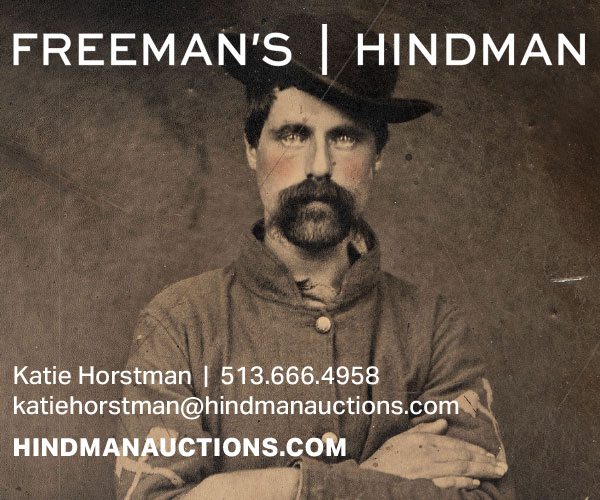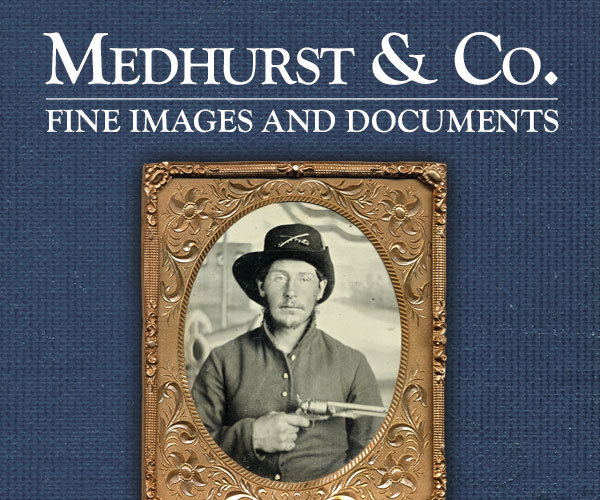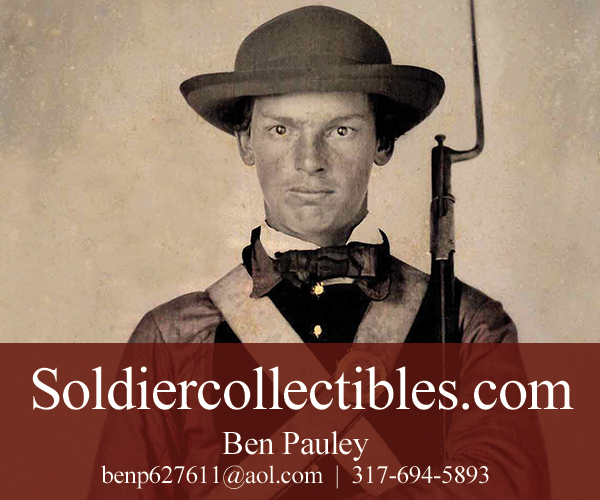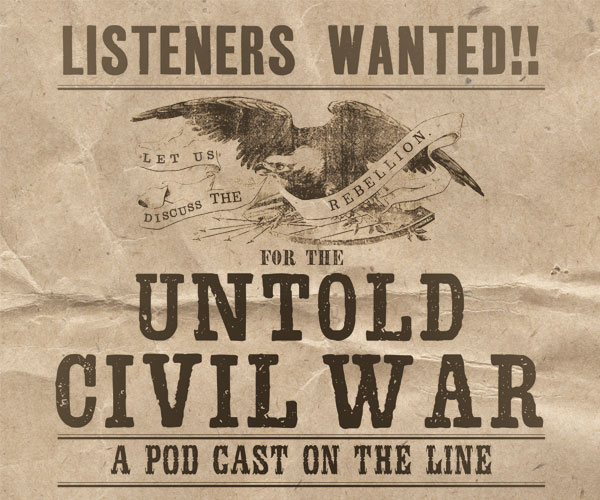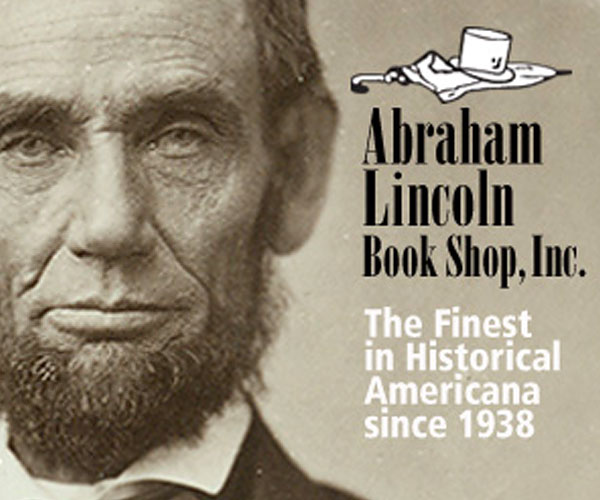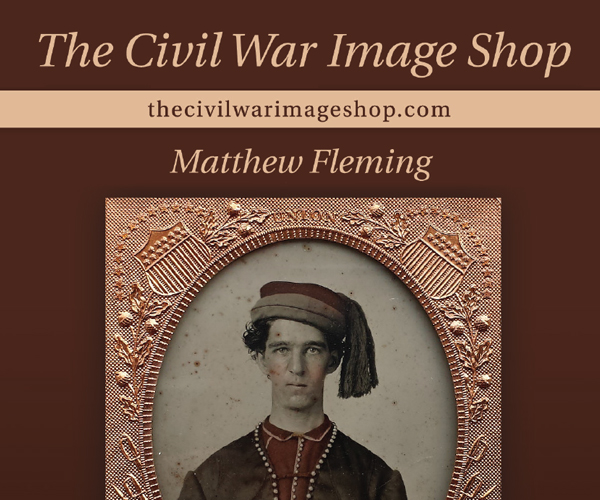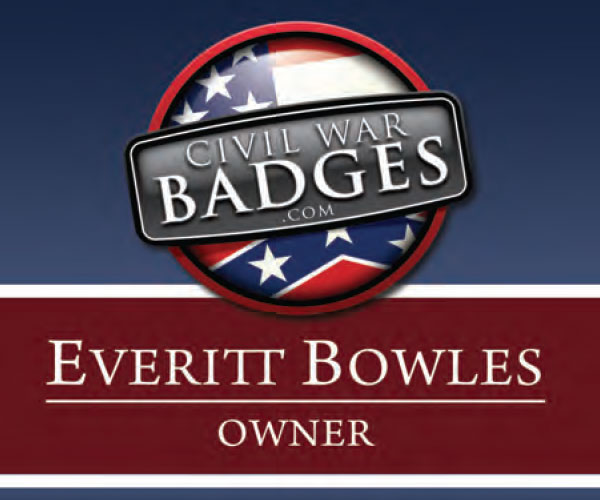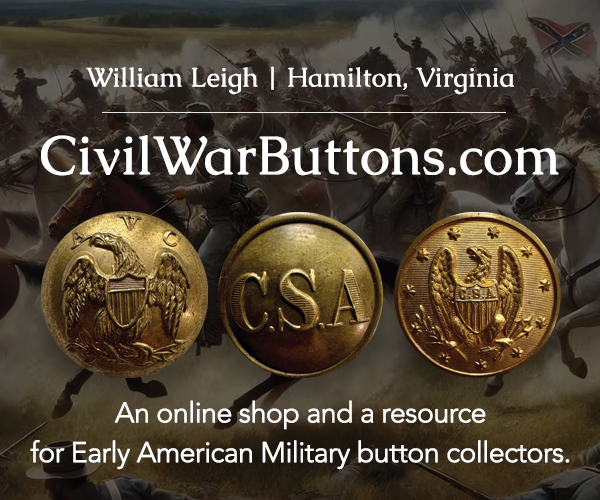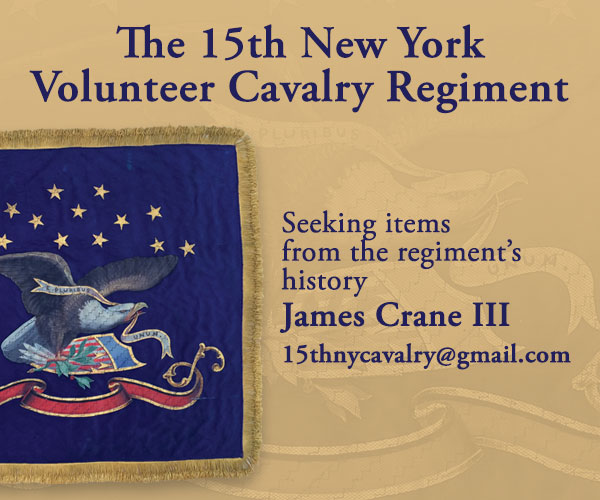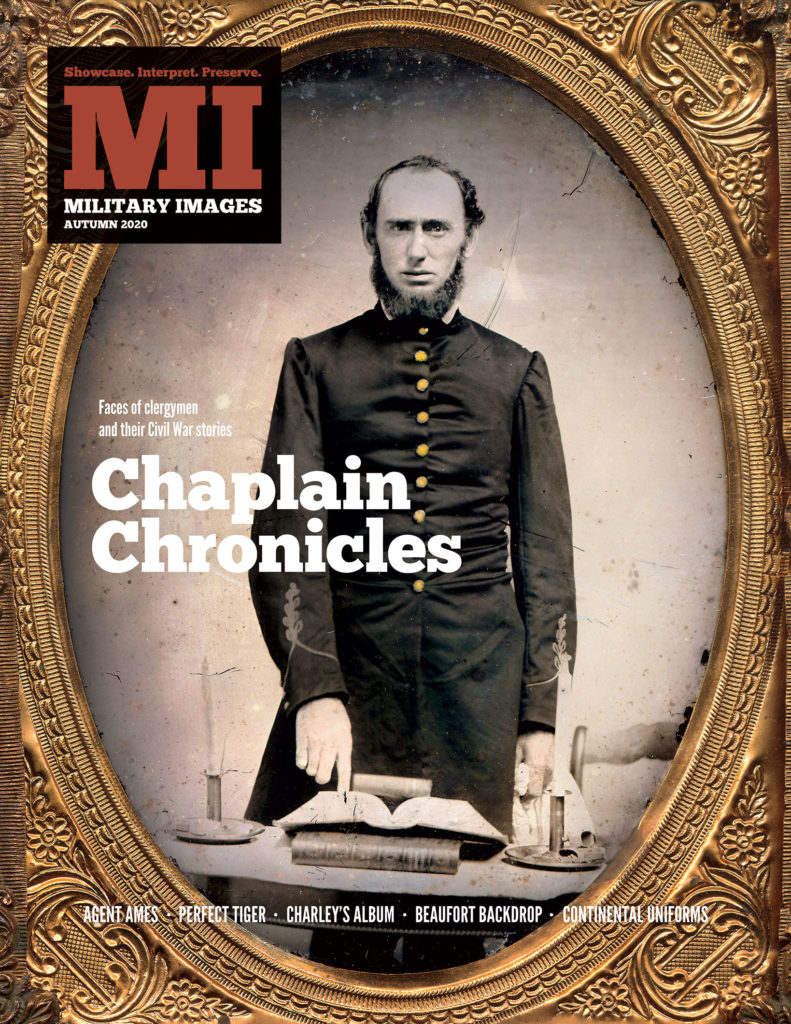
Vol. XXXVIII, No. 4
(80 pages)
Print edition: Visit our store to check availability
Digital edition: Visit JSTOR.org to purchase
Subscribe to MI
Explore the MI Archives:
Browse | Advanced search | Tutorial
Inside
Cover image
A quarter-plate ambrotype from the Dan Schwab Collection pictures Chaplain Nicholas A. Davis of the 4th Texas Infantry.
Table of Contents (p. 1)
Editor’s Desk (p. 2)
The editor puts photographs and stories of Civil War soldiers and sailors into context in “Guidebook to Our American Journey.”
Mail Call (pp. 3-4)
Feedback includes praise for Adam Ochs Fleischer’s Behind the Backdrop column, and thoughts on a lantern slide Barbara Fritchie that appeared in our summer issue.
Military Anthropologist (p. 4)
A study of 250 Civil War soldier and sailor cartes de visite taken by photographers across the country reveals six major styles of mount borders.
Passing in Review (p. 6)
MI Senior Editor Ron Field’s new book, Uniforms of the Union Volunteers of 1861: The Mid-Atlantic States, examines distinctive uniforms worn by Pennsylvanians, New Yorkers, Jerseymen, Delawareans, Marylanders and soldiers from the District of Columbia.
Photo Sleuth by Kurt Luther (pp. 8-9)
In “The Art of Photo Sleuthing,” Luther examines how paintings, long the dominant portraiture form prior to the advent of photography, are a neglected resource that should be considered when researching the identity of a Civil War soldier.
Antebellum Warriors (p. 12)
A quarter-plate tintype pictures an unusual view of a soldier wearing a Pattern 1839 “wheel cap” with a glazed linen rain cover.
The Honored Few (p. 14)
Sergeant Lester Archer of the 96th New York Infantry carried the colors of his regiment during the assault of Union forces against Fort Harrison. He planted the flag on the enemy parapet and for his action received the Medal of Honor.
Most Hallowed Ground by Carolyn B. Ivanoff, with images from the Captain Wilson French Collection (p. 16)
The zenith of Maj. William H. Hugo’s military career occurred at Gettysburg’s Peach Orchard. The low point came in the West in 1881 when he was court martialed. The story of how his highs and lows is told here.
The Citizenry by Elizabeth Topping(p. 18)
In “The Circuit Rider,” we meet Rev. Allen H. Tilton, a traveling Methodist clergyman who spread the word of God throughout central Ohio. In 1864, he traveled 7,000 miles to 100 locations across the Buckeye State.
Fakes, Forgeries and Frauds by Perry M. Frohne (pp. 20-21)
In “Bogus Modern Ink Identifications,” Frohne details how fakers add signatures and related inscriptions to dramatically increase the value of cartes de visite, and how to tell the difference between a faked signature and the real thing.
Chaplain Chronicles (pp. 23-46)
Faces of 40 Union and Confederate clergymen and their stories of spirituality, slavery, courage, caregiving, patriotism, suffering and death during the Civil War.
Agent of the Cotton War by Ron Maness, with images and artifacts from the author’s collection (pp. 48-57)
Most know James T. Ames as a New England sword maker. He was also a global manufacturer of munitions and cotton machinery with Confederate connections. This investigation into is connections involves pikes supplied to abolitionist John Brown, dealings with Great Britain and sales of weapons and machinery to the Southern states before, during and after secession.
Charley’s Album: A pocket-sized treasure recalls a Connecticut officer’s war experience by Dione Longley and Buck Zaidel (pp. 58-61)
Civil War soldiers filled uncounted albums with photographs of their pards to remember friendships forged against a backdrop of war. Time has taken many of them from us. Some survived intact, including this worn leather album small enough to slide into a shirt pocket. It holds just ten photographs—one Charley Deming’s world.
Perfect Tiger: Connecticut’s Col. Elisha Strong Kellogg by Dione Longley and Buck Zaidel, with images and artifacts from the Buck Zaidel Collection (pp. 62-66)
The colonel who led the 2nd Connecticut Heavy Artillery into the 1864 Battle of Cold Harbor was a study in contrasts. “His nature was versatile, and full of contradictions; sometimes exhibiting the tenderest sensibilities and sometimes none at all,” noted one soldier. Beloved by his men, Kellogg’s destiny rose and fell with his regiment.
Caught in the Crossfire: A surgeon in Sherman’s Army between quarreling generals by Frank Jastrzembski (pp. 67-69)
Medical Director Surg. Norman Gay incurred the wrath of Brig. Gen. Thomas W. Sweeny while trying to protect a corps ambulance, and in doing so wandered into an infamous feed between Sweeny and another general, Grenville M. Dodge. Here’s the story.
Grant After Vicksburg: Solving the mystery of who took the general’s photograph by James Bultema (pp. 70-71)
The summer of 1863 was a career-defining period for Ulysses S. Grant as his army captured Vicksburg and secured the Mississippi River for the Union. Five portraits taken of the victorious general weeks later picture Grant as he looked during the historic moment. The author shares his evidence for who he believes is the photographer who made the images.
Material Culture by Ron Field (pp. 72-76)
In “Uniforms Inspired by the “Old Seventy-Sixers,” Field examines the distinctive militia uniforms inspired by Gen. George Washington’s Continentals.
Stragglers: Distinctive Images from MI contributors (p. 77)
Included are portraits of a soldier with a unique belt, an unidentified chaplain and a sergeant who likely served in an infantry regiment that belonged to the U.S. Colored Troops.
Behind the Backdrop: Origins, artistry and photographers by Adam Ochs Fleischer (pp. 78-79)
In “Beaufort’s Mystery Backdrop,” Fleischer examines the distinctive painted canvas connected to portraits taken in Beaufort, S.C., in 1862.
The Last Shot (p. 80)
A sixth-plate tintype from the Brian Boeve Collection pictures a Confederate brandishing a revolver produced by the Starr Arms Company.


